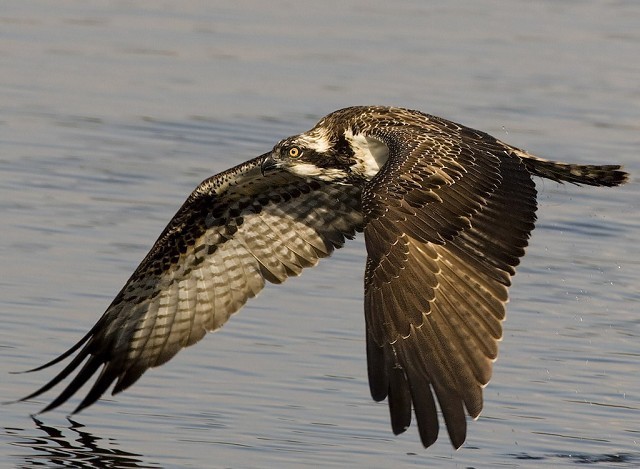A decade of change in our bird populations
Over the last decade, rare birds in the UK have been faring far better than their commoner counterparts, according to the latest assessment produced by the UK's leading conservation organisations. The research shows that almost 60% of the 63 rare birds that breed in the UK have increased over the last ten years, compared with only just over one third of common species. Contrastingly, only 28% of the UK's rare birds have decreased over the same period, compared with four out of every ten common birds.

Osprey, Far Ings NR, Lincolnshire (Photo: Don Davis)
Rare birds, with fewer than 1000 pairs, with increasing populations include the Osprey, Corncrake, Avocet, Cirl Bunting and Stone Curlew — all birds subject to conservation action. The declining common birds include the Linnet, Nightingale, Swift, Guillemot, Starling, House Sparrow and Red Grouse — all widespread species that are suffering declines for a variety of reasons.
The overview of 210 native breeding birds has been produced by a coalition of conservation organisations to celebrate the publication of the State of the UK's Birds report, which this year enjoys its tenth anniversary. The report is published by the RSPB for a coalition of conservation organisations, including the RSPB, the British Trust for Ornithology, The Wildfowl & Wetlands Trust, The Countryside Council for Wales, Natural England, the Northern Ireland Environment Agency, Scottish Natural Heritage and the Joint Nature Conservation Committee.
Dr Mark Avery, the RSPB's Conservation Director, said: "Over the last decade we've enjoyed some cracking conservation successes, including removing some threatened species from the Red List and increasing the populations of Red Kite, Bittern, Avocet, Osprey, Stone Curlew and Cirl Bunting. However, these triumphs are countered by continued declines of some widespread species, like the Skylark, Kestrel, Willow Warbler and Grey Partridge."
Dr David Noble of the British Trust for Ornithology added: "That some of our rarer birds have responded to targeted conservation action is great news. It shows just what can be achieved. What we need to do now is to continue the good work and use some of the lessons we have learned to help our more common birds."

Common Scoter, Newlyn, Cornwall (Photo: Tony Mills)
Dr Baz Hughes of the Wildfowl & Wetlands Trust said: "It is really encouraging to look back at how concerted effort has improved the status of many wetland birds, not least Avocet, Bittern and Black-tailed Godwit. But sadly exceptions like the Common Scoter — the UK's most endangered duck — still need significant conservation action if we're going to pull them back from the brink."
Tom Tew, Chief Scientist for Natural England, said: "It is clear that targeted conservation work has made a real difference in reversing the decline of many rare species and that positive land management, often delivered through green farming schemes such as Environmental Stewardship, has had an important part to play. By working closely with farmers and other land managers we need to ensure that these benefits are spread into the wider countryside where more common birds continue to suffer from declines."
JNCC's David Stroud said: "These results remind us that the causes of the declines for many migratory species can often be in other countries. For example, Greenland White-fronted Geese are declining owing to factors that are restricting its breeding in the Arctic. This strongly emphasises the need for UK conservation organisations to collaborate internationally with those in other countries to tackle such issues."
Some of the key bird conservation stories coming from 10 years of the report include:
- a continued decline of farmland birds
- The dramatic rise of Bitterns from 19 to 82 males
- An increase in the numbers of Dartford Warblers, Nightjars and Woodlarks in line with the positive management of heathland
- An increase in the number of Corncrake, Stone Curlew and Cirl Bunting, thanks to positive habitat management
- A dramatic recovery in the fortunes of the White-tailed Eagle and Red Kite, thanks to reintroduction programmes
- An increase in the number of Little Egrets, which only bred for the first time in the UK in 1996
- A decrease in the numbers of Kittiwake and Guillemot, two species of seabird having their most important EU populations in the UK
The report is provided in PDF format: click here to read it (880KB — on slow connections this may take a while to load).

